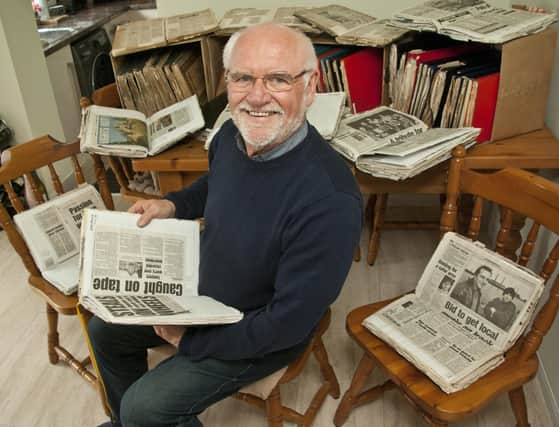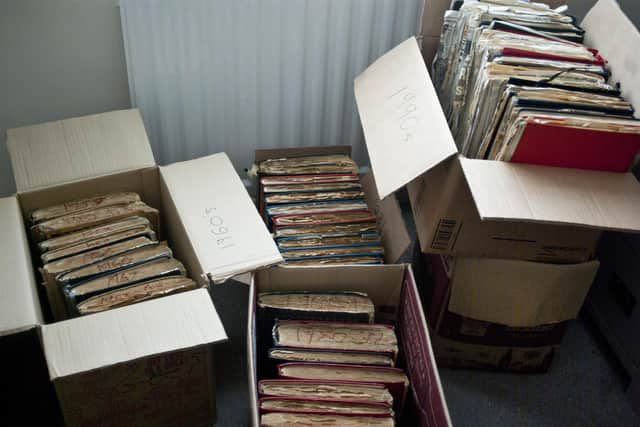Cuttings of stories covering 50 years in Northumberland donated to museum


Between 1959 and 2009, reporters working in Ashington, Morpeth and Bedlington on two newspapers kept copies of every story they wrote in a collection of cuttings books.
And one of those reporters, Vince Gledhill, has presented a selection of his cuttings to Woodhorn Museum, in Ashington.
Advertisement
Hide AdAdvertisement
Hide AdThe collection of 49 cuttings books show a day-to-day record of tragedies, triumphs, people and events that helped shape the south east of Northumberland.


Vince, from Ashington, whose work forms the bulk of the cuttings books, said: “This is the social heartbeat of the district as it happened day by day.
“Celebrities, heroes, crime fighters and criminals are all there, along with artists, inventors, campaigners and politicians.”
The oldest book, with stories from 1959, was collated by Alan Robson, Vince’s predecessor in the Chronicle and Journal’s Ashington office.
Advertisement
Hide AdAdvertisement
Hide AdVince said: “He was in the habit of pasting the stories he wrote in the previous year’s desk diary and after he died in 1965 I continued preserving stories in the same way.
“At that time the newspapers had special editions or pages for districts across the region, but only the Newcastle editions were kept on microfilm by the company library.”
Vince, now 76, added: “When computers and digital storage came along, I continued cutting and pasting stories in the old way, until I retired in 2009.
“I brought my cuttings collection home and over the years since I retired, I have enjoyed dipping into the books to recall big and small stories and some of the fascinating people behind them and help me write a couple of books.
Advertisement
Hide AdAdvertisement
Hide Ad“Originally these books were there to help me do my job by being an easy to access store of information.
“But now they have become a unique and comprehensive record of day-to-day life as it unfolded in those 50 years, including the slow collapse of coal mining and the births and deaths of other businesses.
“In total, the books contain around 20,000 stories, all of them linked in some way to people in this area, so it seemed to me that the whole collection should be donated to Northumberland Archives at Woodhorn Museum.
“It is the right place for this collection to have a new life as a resource for researchers with an interest in social and family history in the area.
Advertisement
Hide AdAdvertisement
Hide Ad“I hope that when they have been catalogued they will become useful resource for the archives and accessible to all.”
Some of the stories in the cuttings books include:
• Parking sensors now in common use in most modern cars were invented in the village of Dalton, near Ponteland in 1980 and first used on the Butterwell Opencast Mining site at Morpeth.
• In 1963 Ashington Council’s surveyor came in for huge criticism from councillors and union officials when he said Northumberland’s pits had 20 years life left in them.
• Ashington Colliery closed 25 years later and the final shift came up from Ellington, the last working pit in Northumberland, on February 18, 1994.
• In June 1959 the Housing Minister Henry Brooke killed off a plan to build homes for 4,000 miners in a satellite town between Woodhorn and Lynemouth.